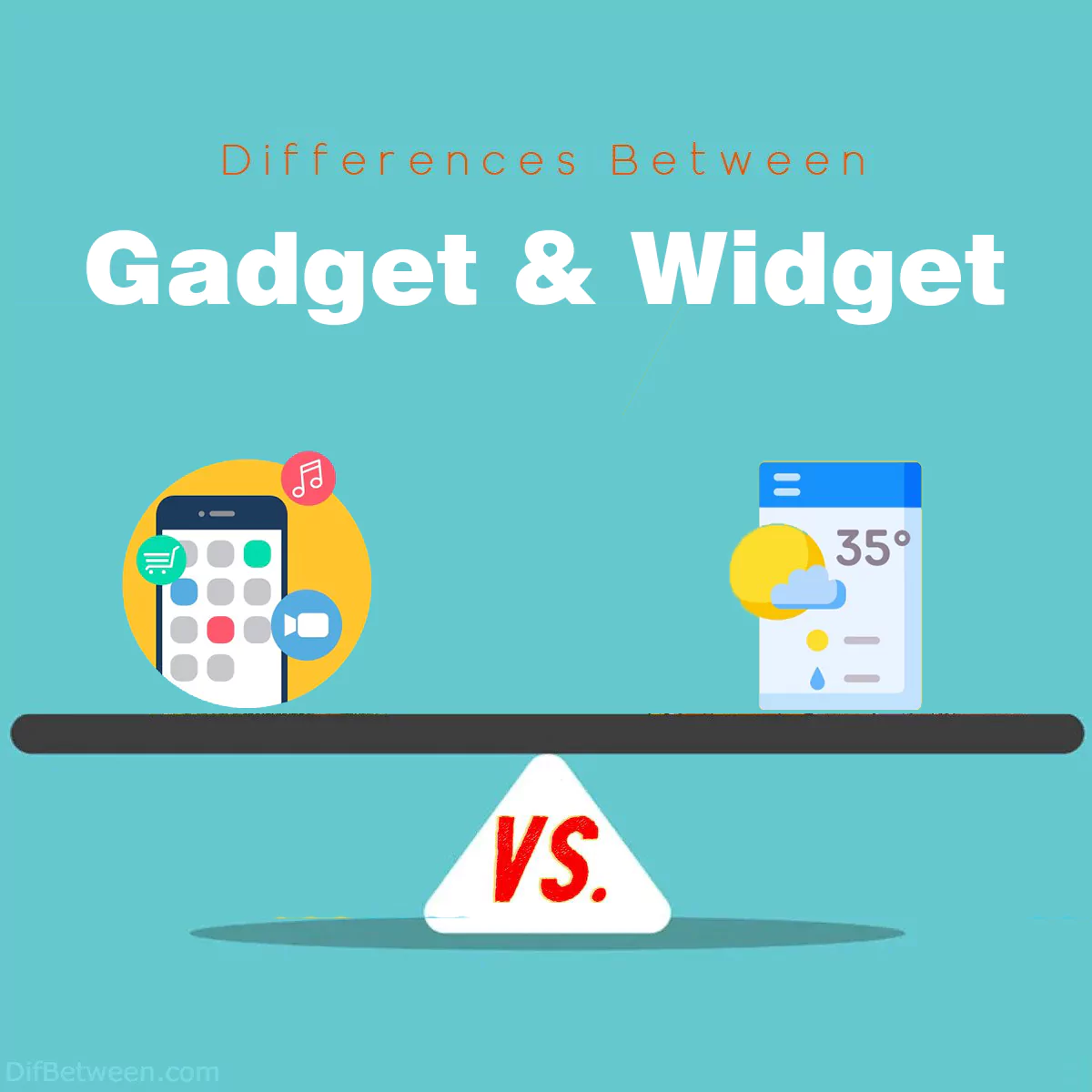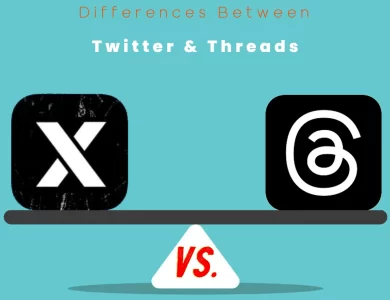
| Aspect | Gadgets | Widgets |
|---|---|---|
| Physical Presence | Tangible, physical objects | Digital components on device screens |
| Standalone Functionality | Independent, self-contained | Reliant on the underlying operating system or platform |
| Portability and Mobility | Often designed for on-the-go use | Tied to the device’s interface, not easily transferable |
| Customization and Personalization | Limited customization options | Highly customizable and adaptable |
| Real-Time Updates and Interaction | May require user interaction | Can provide real-time information and require less interaction |
| Device Dependency | Not necessarily tied to a specific brand or platform | Tied to the operating system or platform they are designed for |
| Accessibility | May pose challenges for individuals with disabilities | Can be adapted for accessibility needs |
| Examples | Smartphone, fitness tracker, digital camera | Weather widget, news ticker, clock widget |
In today’s tech-driven world, gadgets and widgets play pivotal roles in our daily lives. From our smartphones to the widgets on our computer screens, these terms often pop up, leaving many of us wondering about their differences. In this comprehensive guide, we will embark on an exploration of the key distinctions between gadgets and widgets. So, fasten your seatbelts, as we dive into the fascinating world of technology!
Differences Between Gadget and Widget
The primary distinctions between gadgets and widgets revolve around their nature and functionality. Gadgets are tangible, physical devices designed for specific tasks, such as smartphones, fitness trackers, or digital cameras, offering standalone capabilities. In contrast, widgets are digital components residing on device screens, providing quick access to real-time information or performing limited tasks without the need to open full applications. Widgets are highly customizable and adaptable, making them ideal for users seeking convenience and personalization, while gadgets excel when physical hardware interaction and portability are key considerations in technology choices.
Physical vs. Digital Presence
One of the most fundamental distinctions between gadgets and widgets lies in their physicality. Gadgets are tangible, physical objects that you can hold, touch, and interact with in the real world. Think of your smartphone, your digital camera, or your fitness tracker. These are all gadgets that you can physically handle.
Widgets, on the other hand, are purely digital entities. They exist solely within the digital realm of your electronic devices, such as your computer or smartphone. You can see and interact with widgets on your device’s screen, but you can’t touch or hold them in the same way you can with gadgets.
Standalone Functionality vs. Software Components
Another key difference between gadgets and widgets lies in their functionality and how they operate within a system.
Gadgets are typically standalone devices with their own hardware and software. They are designed to perform specific tasks or functions independently. For example, a digital camera has its own lens, image sensor, and processing capabilities, allowing it to capture photos and videos without relying on external components.
Widgets, on the other hand, are software components or mini-applications that rely on the underlying operating system or software platform. They are not standalone entities but are integrated into the user interface of a device’s operating system. Widgets draw data and resources from the system and other applications to provide information or perform tasks. For instance, a weather widget on your smartphone retrieves data from the internet and displays it on your home screen, but it doesn’t have its own dedicated hardware for weather forecasting.
Portability and Mobility
Portability is another aspect where gadgets and widgets differ significantly. Gadgets are often designed with mobility in mind, making them easy to carry around and use on the go. Consider devices like smartphones, tablets, and portable music players. These gadgets are compact and lightweight, allowing users to take them wherever they please.
In contrast, widgets are inherently tied to the device on which they reside. They are not independent entities that you can move from one device to another. Widgets are part of the user interface and are specific to the operating system or platform they are designed for. You can customize widgets on your smartphone, but they stay on that device; you can’t physically transfer them to another smartphone.
Customization and Personalization
Customization is an area where widgets shine. These digital components are known for their flexibility and adaptability. Users can often personalize widgets to display the information they find most relevant or useful. For example, you can choose which widgets to place on your smartphone’s home screen and arrange them according to your preferences. This level of customization allows users to tailor their digital experience to their liking.
Gadgets, on the other hand, offer limited customization options in comparison. While you can configure some settings and preferences on gadgets, their form and function are usually fixed. You can’t easily change the physical design or capabilities of a gadget like you can with widgets on your device’s screen.
Real-Time Updates and Interaction
When it comes to real-time updates and interaction, widgets have a distinct advantage. Since widgets are digital and connected to the internet, they can provide dynamic, real-time information without requiring users to open full applications. For instance, a news widget can display the latest headlines as they happen, and a weather widget can update with current weather conditions.
Gadgets, while capable of providing real-time information in some cases (think of smartwatches that display notifications), often require more user interaction. You may need to open an app on your smartphone or press a button on a gadget to receive updates or perform actions.
Device Dependency
Another significant difference lies in device dependency. Gadgets, although they can be complementary to specific devices or ecosystems (like Apple’s ecosystem with iPhones, iPads, and Apple Watches), are not necessarily tied to a particular brand or platform. You can use a fitness tracker from one manufacturer with a smartphone from another manufacturer, as long as they are compatible.
Widgets, on the other hand, are inherently tied to the operating system or platform they are designed for. For instance, Android widgets are meant for Android devices, and iOS widgets are meant for Apple devices. You can’t use an Android widget on an iOS device or vice versa without significant modifications or third-party software.
Accessibility
Accessibility is an essential factor to consider when comparing gadgets and widgets. Gadgets, being physical objects, may pose certain accessibility challenges for individuals with disabilities. For example, the small buttons and screens on some gadgets can be difficult for people with visual or motor impairments to use effectively.
Widgets, on the other hand, can be more adaptable to accessibility needs. Operating systems often include accessibility features that can be applied to widgets, such as screen readers for visually impaired users. Additionally, users can often resize and customize widgets to suit their accessibility preferences.
Gadget or Widget : Which One is Right to Choose?
Choosing between a gadget and a widget depends on your specific needs, preferences, and the task at hand. Both gadgets and widgets have their unique advantages and use cases. Let’s explore when it’s appropriate to choose one over the other:
Choose a Gadget When:
- Physical Functionality is Essential: If you require a tangible device with dedicated hardware to perform a specific task, a gadget is the way to go. For instance, if you’re into photography, a digital camera with various lenses and settings is indispensable.
- Portability is Key: When mobility is crucial, opt for gadgets designed for on-the-go use. Smartphones, fitness trackers, and portable music players are excellent choices for individuals who need technology to keep up with their active lifestyles.
- You Prefer Standalone Devices: Some people prefer having dedicated devices for specific functions. If you value the simplicity of having individual gadgets for tasks like navigation (GPS), fitness tracking, or reading (e-readers), gadgets are the way to go.
- Customization Isn’t a Priority: Gadgets offer limited customization compared to widgets. If you don’t need extensive personalization and are content with the default settings of a device, a gadget is a suitable choice.
- You Need Hardware Interaction: Gadgets often require direct interaction with their hardware components. If you need to physically interact with a device, like adjusting camera settings or playing music on a physical device, gadgets are designed for such interactions.
Choose a Widget When:
- Quick Access to Information is Vital: Widgets shine when you need instant access to real-time information without the hassle of opening full applications. They provide at-a-glance data on your device’s home screen, making them ideal for tasks like checking the weather, monitoring stocks, or tracking your calendar.
- Adaptability and Customization are Key: Widgets are highly adaptable and customizable. If you want to tailor your device’s interface to display precisely the information you need and in the way you prefer, widgets allow for this level of personalization.
- Real-Time Updates are Required: When staying updated in real-time is crucial, widgets are the go-to choice. They can display dynamic information such as news headlines, sports scores, and social media updates without requiring you to open dedicated apps.
- Device Integration Matters: Widgets seamlessly integrate with your device’s operating system. If you want a cohesive user experience that’s tightly integrated with your device’s ecosystem, widgets are designed with this in mind.
- Accessibility is a Concern: For users with accessibility needs, widgets can often be adapted more easily to accommodate those needs. Operating systems frequently offer accessibility features that can be applied to widgets, making them a more inclusive choice.
In conclusion, the choice between a gadget and a widget depends on your specific requirements and how you prefer to interact with technology. Gadgets excel in providing dedicated, physical solutions, while widgets offer digital convenience, customization, and real-time updates. Consider your needs and preferences carefully when deciding which one is right for you, and don’t forget that in many cases, a combination of both can provide a well-rounded technological experience.
FAQs
A widget is a digital component or mini-application that resides on the user interface of electronic devices, such as computers and smartphones. Widgets provide quick access to specific information or perform limited tasks without the need to open full applications.
A gadget is a term used to describe a tangible, often electronic or mechanical device designed to perform specific functions or tasks. Gadgets can vary in size and complexity and are known for their physical presence.
Examples of gadgets include smartphones, digital cameras, fitness trackers, e-readers, GPS devices, and portable gaming consoles, among others.
Widgets are smaller, more focused components that provide specific information or functions on a device’s home screen or interface. Apps, on the other hand, are full-fledged software programs that offer a wide range of features and functionality when opened.
Yes, widgets are highly customizable. Users can often personalize widgets by choosing what information they want to display and where they want to place them on their device’s screen.
Widgets can consume some battery power, especially if they continuously update in real-time. However, modern devices are designed to optimize battery usage, and users can often control widget behavior to minimize their impact on battery life.
Widgets are typically designed for specific operating systems or platforms. For example, Android widgets are meant for Android devices, and iOS widgets are meant for Apple devices. Cross-platform compatibility may require third-party solutions or modifications.
Gadgets offer standalone functionality, dedicated hardware, and often superior performance for specific tasks. They are particularly useful when physical interaction or mobility is essential.
Widgets provide quick access to real-time information, high levels of customization, and seamless integration into the device’s interface. They are convenient for users who want to stay updated without launching full applications.
Yes, most devices allow you to use both gadgets (physical devices) and widgets (digital components) simultaneously. This allows you to enjoy the benefits of both worlds, combining the functionality of gadgets with the convenience of widgets.
Read More :






